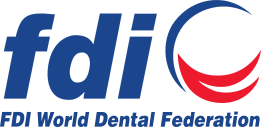Infection Control and Sterilization in dental clinic
Location
Speaker
Dr Antoine Choufani
Antoine Choufani DDS, DESS, DUCIA, DSO
Assistant Professor, Head of Public Dental Health Department,
Faculty of Dental Medicine, Lebanese University
Doctor of Dental Surgery. Saint Joseph University
D.E.S Oral Biology. Lebanese University
D.E.S.S Community Dentistry. Lebanese University
Certificate of Public Dental Health. René Descartes University-Paris 5
D.U Advanced Implant Surgery. Saint Joseph University
Doctorate in Odonatological Sciences. Lebanese University
Chairman of the Unit: Medical emergencies in dental office
ITI member (International Team for Implantology)
Speaker with international publications
Board member, Lebanese Dental association Instructor and First Aid Trainer at the Lebanese Red Cross
Owner and director of “Choufani Dental Polyclinic”
Organizer
Learning Objectives:
- to understand the sequence of sterilization
- to learn how to choose an autoclave
- to encourage the use of sterilization tests
Abstract:
Infection prevention and control of cross-contamination are essential in providing a secure environment for patients and healthcare providers within healthcare settings in general and more specifically in dental practices.
The sterilization of contaminated instruments is crucial in clinical practice to ensure the protection of patients and the staff. Steam autoclaving is the most commonly used and recommended sterilization method in dental settings. Other methods include chemiclaves using chemical vapor sterilization and dry heat sterilizers. Sterilization procedures should be regularly monitored as recommended by the CDC and the Association for the Advancement of Medical Instrumentation to verify the effectiveness of sterilization.
